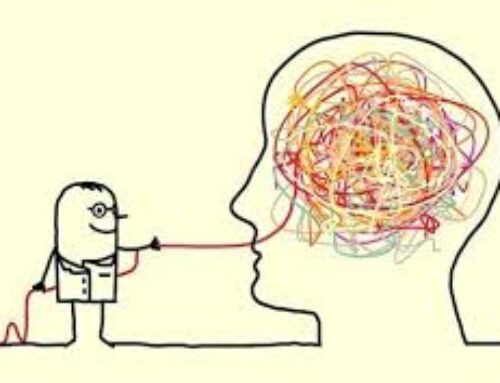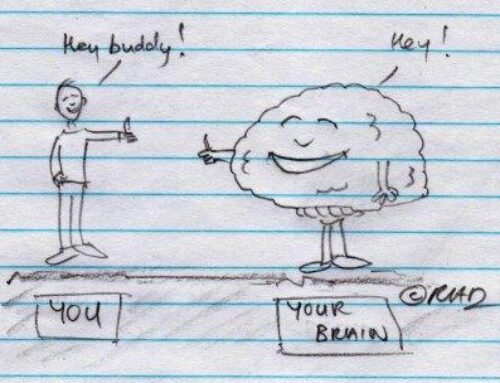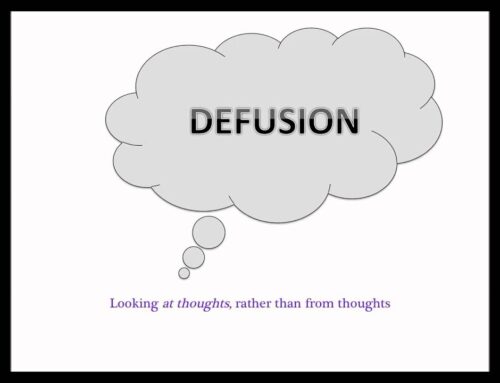5 Steps to Change Your Thoughts
August 25, 2015
Categories: Thoughts
This post is Part 2 in a 4-part blog series on changing our thoughts, feelings, and behaviors. (If you missed the previous post, you can find Part 1 here.)
Sometimes we feel bad because we hold on to problematic thoughts or beliefs. We aren’t completely rational, and sometimes our thoughts or beliefs are a bit out of step with the way things really are.
We can overgeneralize because of our particular history or set of experiences. For example, if we grew up in a home that was verbally or physically abusive, we might struggle to trust other people, believing that they will hurt or abuse us. Given our history, this way of viewing the world makes sense. But it’s an overgeneralization. Some people are mean, and may hurt and abuse us. But some people are kind. If we hold on to a belief that all people will hurt or abuse us, we may never allow ourselves to get close to another person. Our belief holds us back from relationships.
5 Steps to Change Your Thoughts
It is important to assess our thoughts and beliefs to check if they are accurate. If we are stuck in a way of thinking that isn’t in tune with reality, we might want to adjust the belief some. Here are 5 steps that I have found helpful when trying to change my thoughts:
- Identify your thoughts. You can’t change what you aren’t aware of. This is why it’s important to take time to identify what you are thinking. I talked about one exercise in the last blog post. Take five minutes and identify your feeling, thought, and behavior. Try to get in the habit of doing this three times per day.
- Assess the accuracy of your thoughts. Take some time to consider whether your thought is accurate or not. Put yourself in the position of an investigator. What is the evidence that this thought is true? What about the opposite? What is the evidence that this thought is not true? If you determine that the thought is true, are there exceptions? Are there certain times or situations where it is not true?
- Check your past. Often our beliefs or ways of thinking are impacted by our past. One thing to consider is your childhood. What were your relationships like with your parents or primary caregivers? Is there anything you can identify about your childhood that seems connected with this particular thought? If so, your past might be affecting your current thoughts or beliefs. A second thing to consider is traumatic experiences. A traumatic experience can cause a shift in the way we see the world. Have you had any traumatic experiences that seem connected with this particular thought?
- Get a second opinion. Check out your thought or belief with a friend or family member you trust. Ask them what they think. Tell them what you are thinking, and ask for feedback. Do they think or believe the same thing? People do have differences, but if a person you trust has a different perspective on your situation, it might be worth considering it.
- Experience something new. Sometimes the previous steps are enough to cause a shift in your thoughts or beliefs. Considering the evidence for and against a thought, gaining insight into the connections between your past and a belief, and seeking feedback from others can be powerful interventions. Sometimes, however, it’s still difficult to change a thought or belief. You might “know” in your head that the thought or belief is inaccurate, but find it tough to really “believe” it in your heart. In these situations, you probably need to actually experience something different to change the way you think. You might need to see the new thought actually play out in your life for you to truly get it.
Discussion: What have you found to be the most effective strategy for changing a thought or belief?
Click here to read Part 3: 3 Strategies to Change a Behavior
Related Thoughts
No Comments
Leave A Comment

Subscribe To My Newsletter
Join my mailing list to receive the latest blog posts.
Receive my e-book “The Mental Health Toolkit” for free when you subscribe.






[…] focused on cognitive-behavioral therapies (CBT), which targeted both overt behavior as well as one’s thoughts, which were thought to undergird one’s feelings and […]
[…] Click here to read Part 2: Changing Thoughts […]
[…] Take a look at whatever thing in your life you are unhappy about. If that thing is due to your choices, your behaviors, your patterns of thinking, if it IS your fault… Then you have power. You could do something different. For example, you could make different choices, do different behaviors, or change your ways of thinking. […]